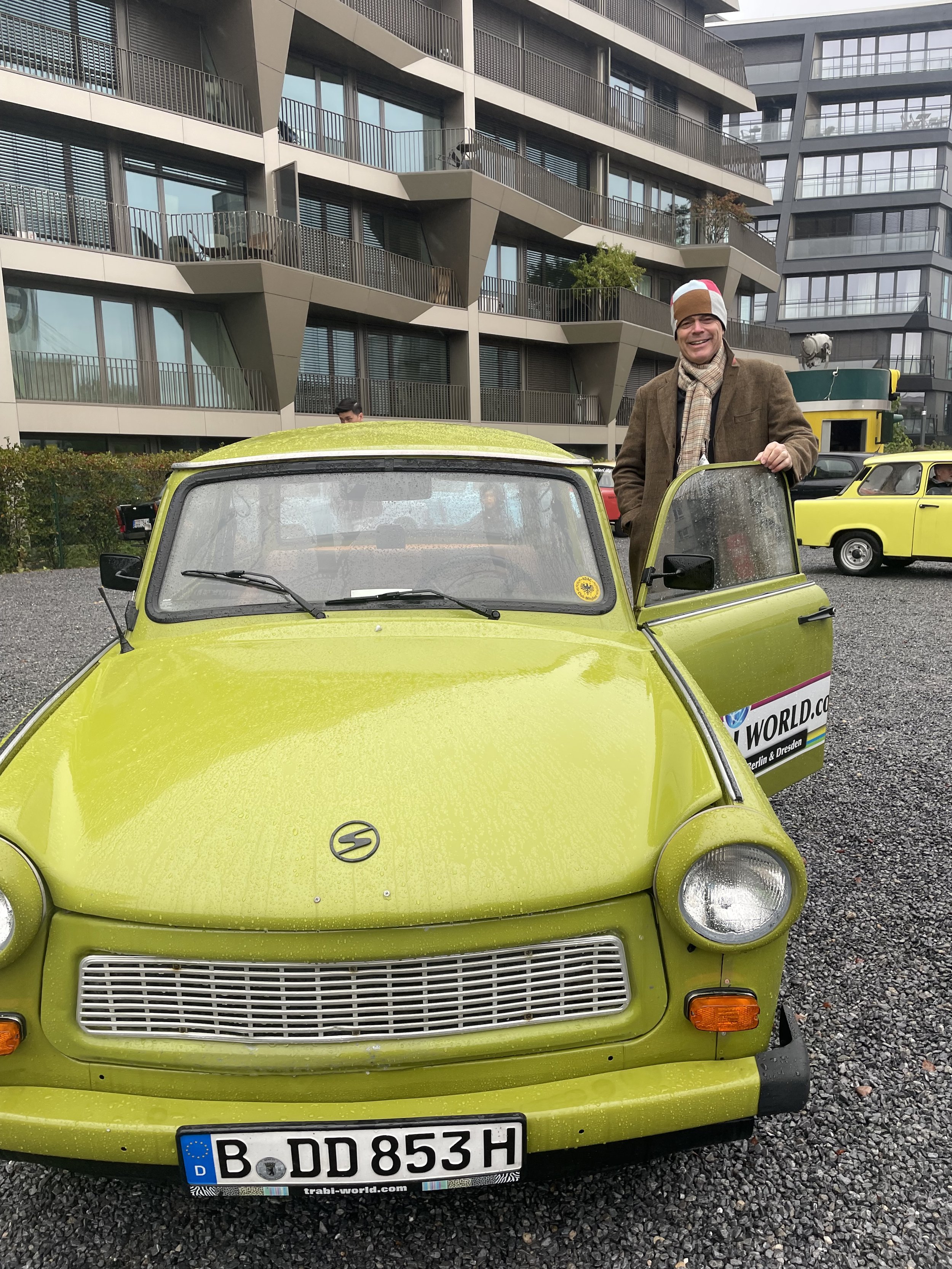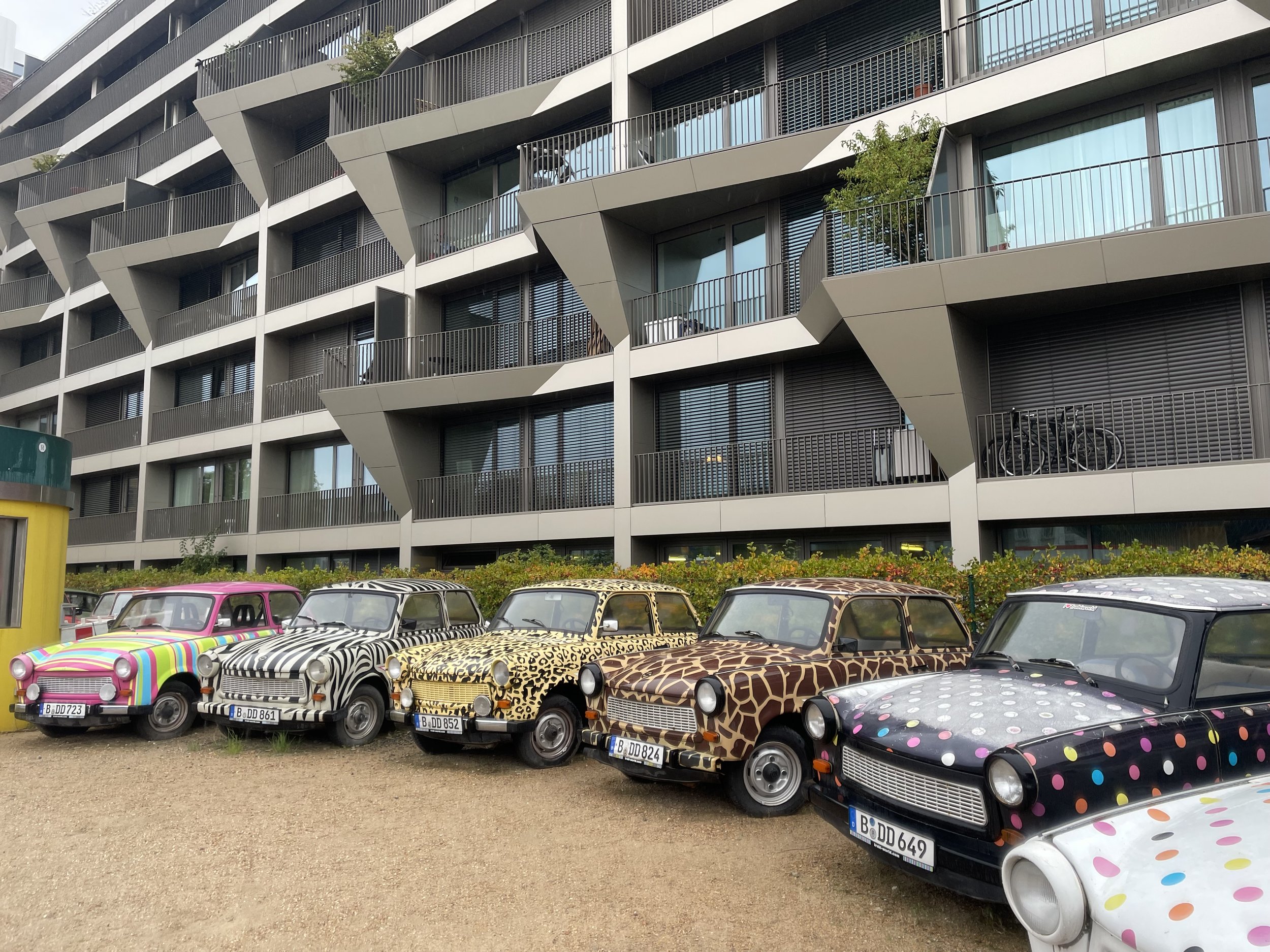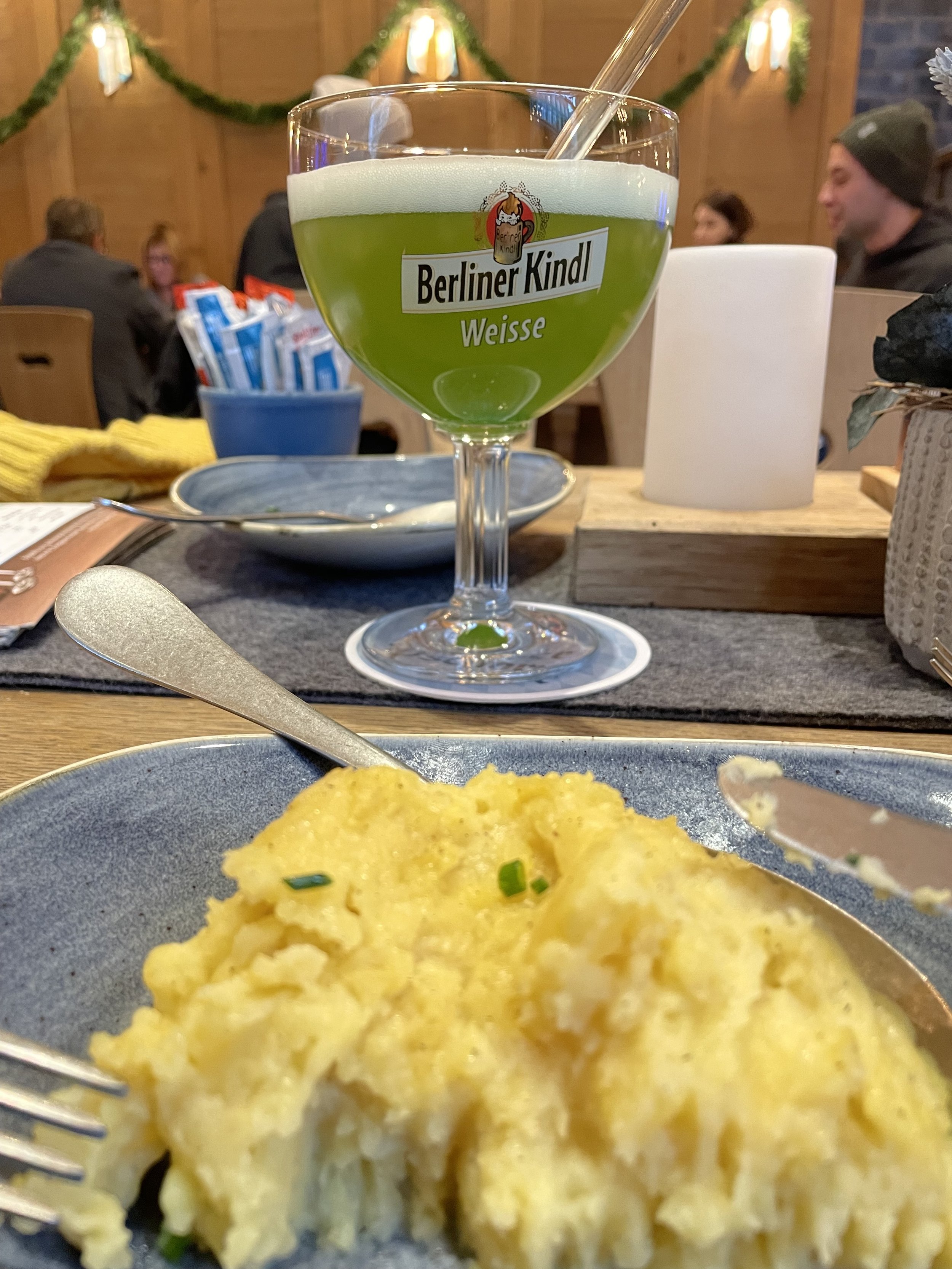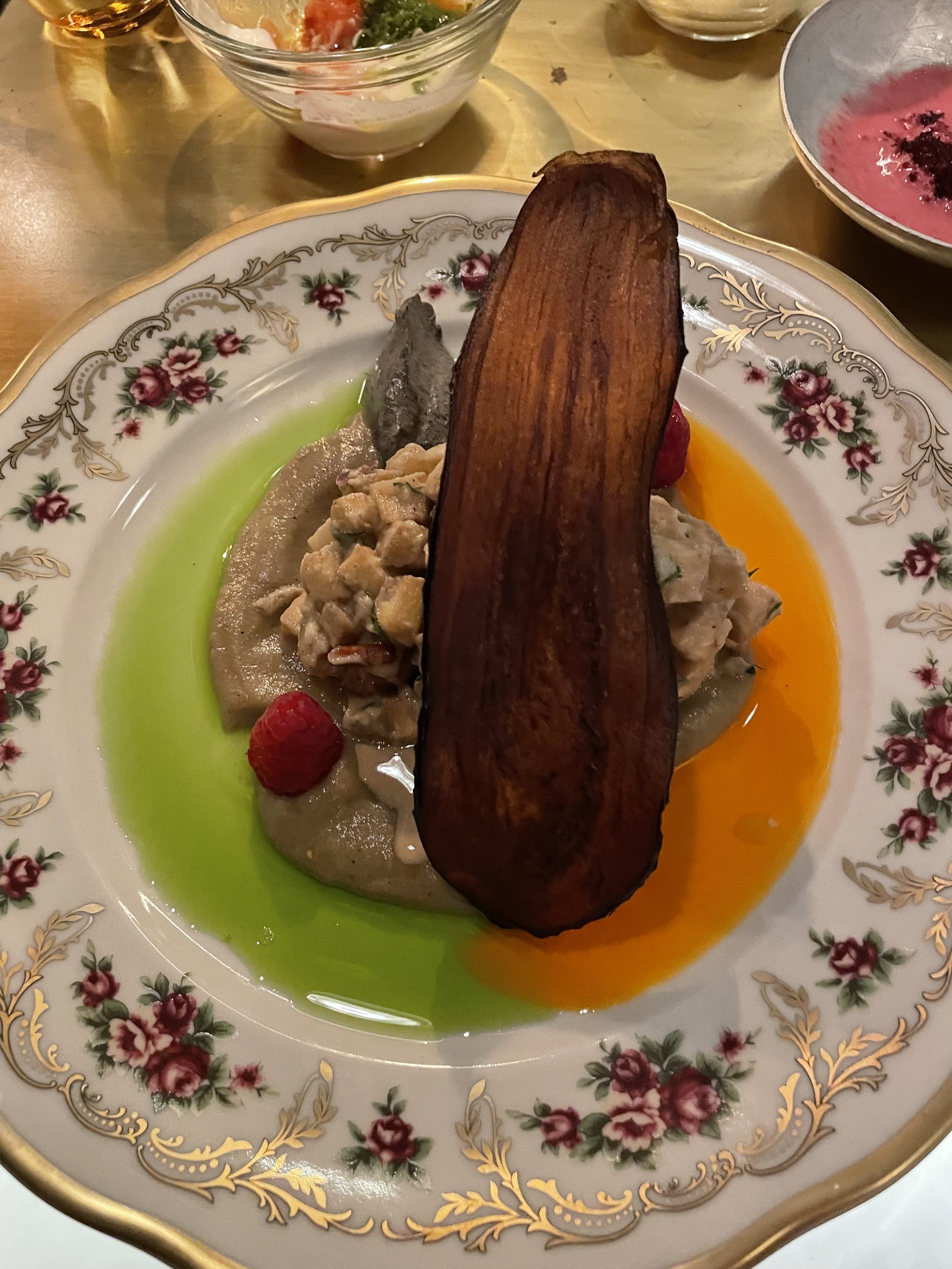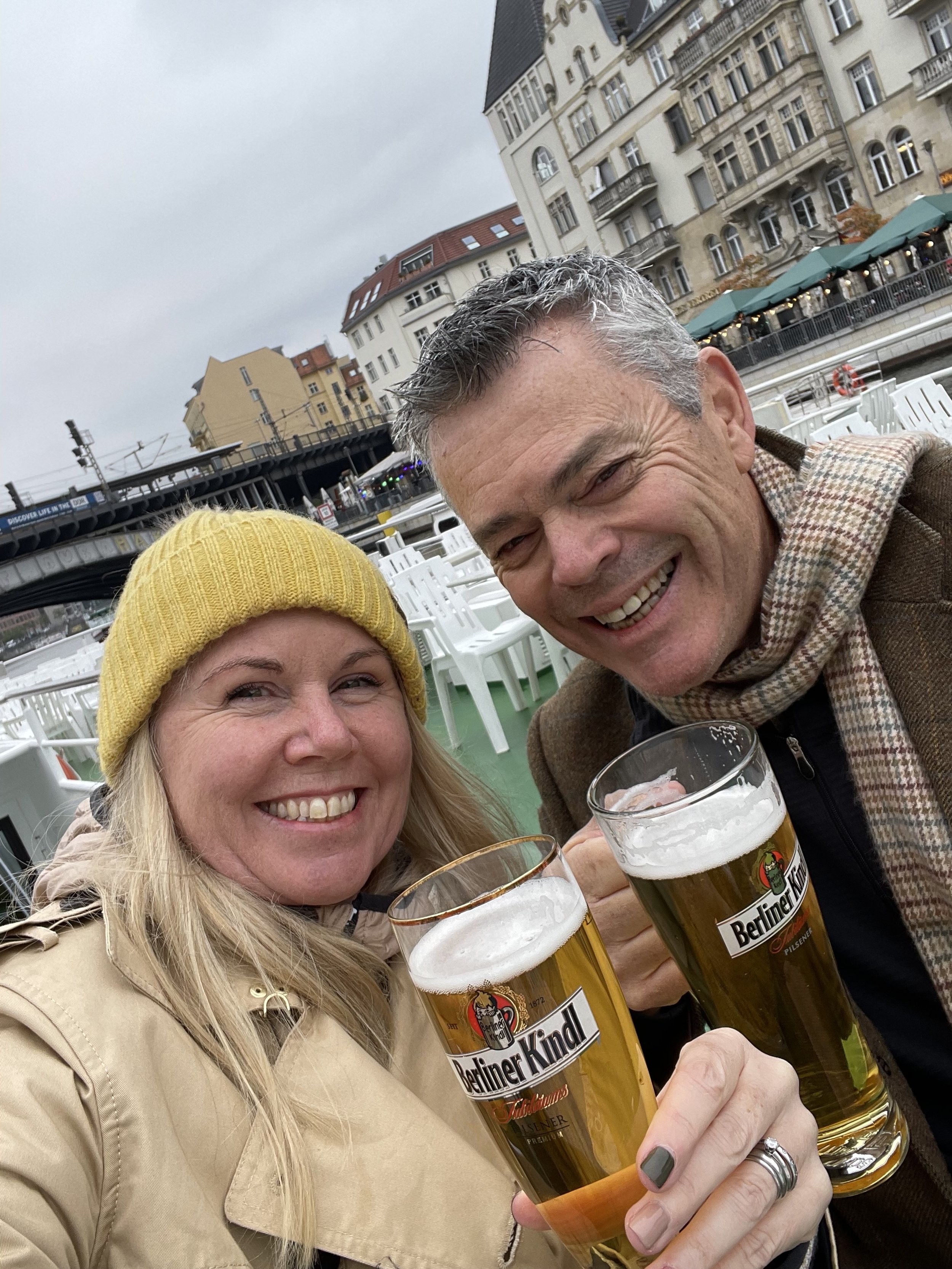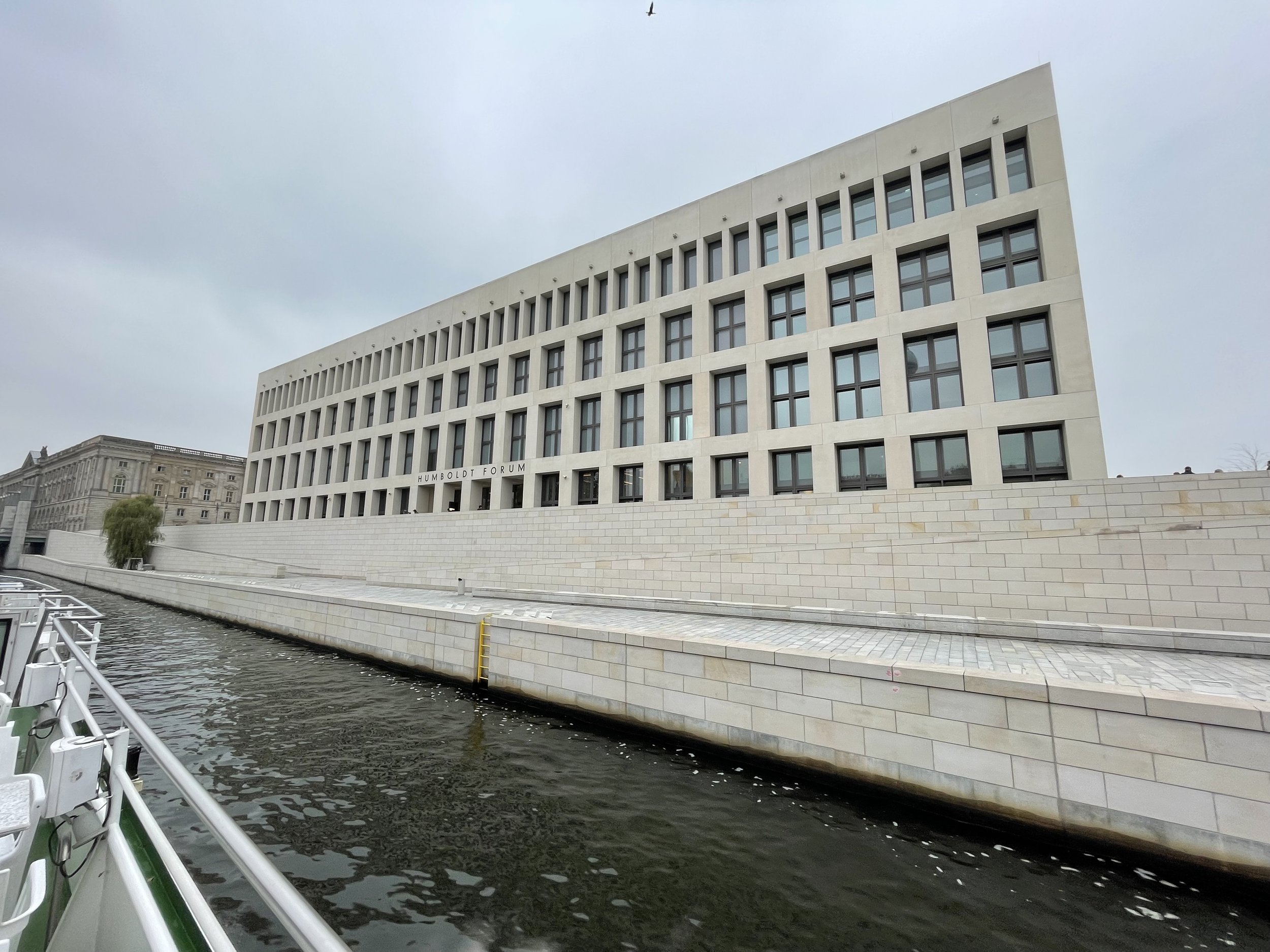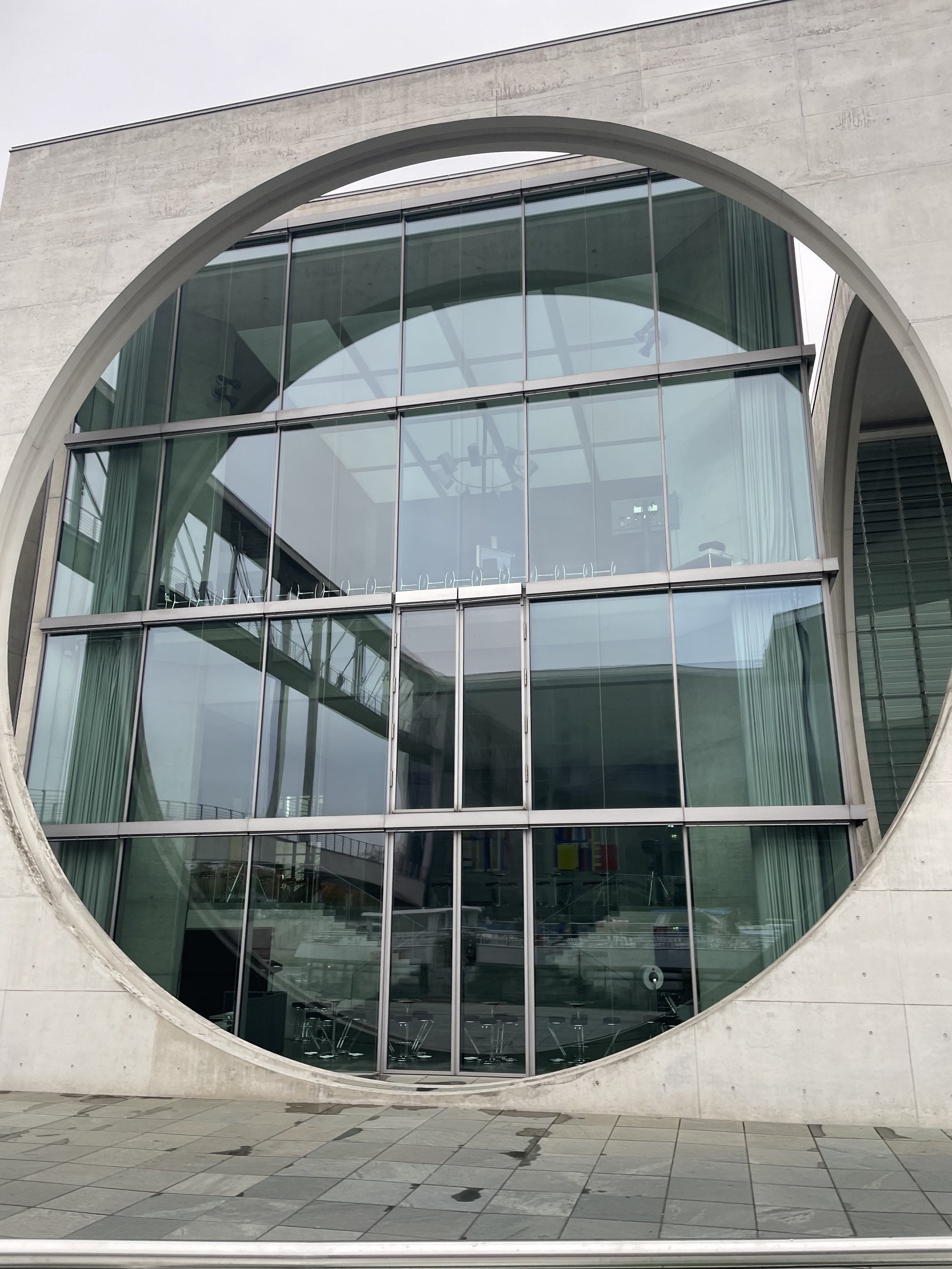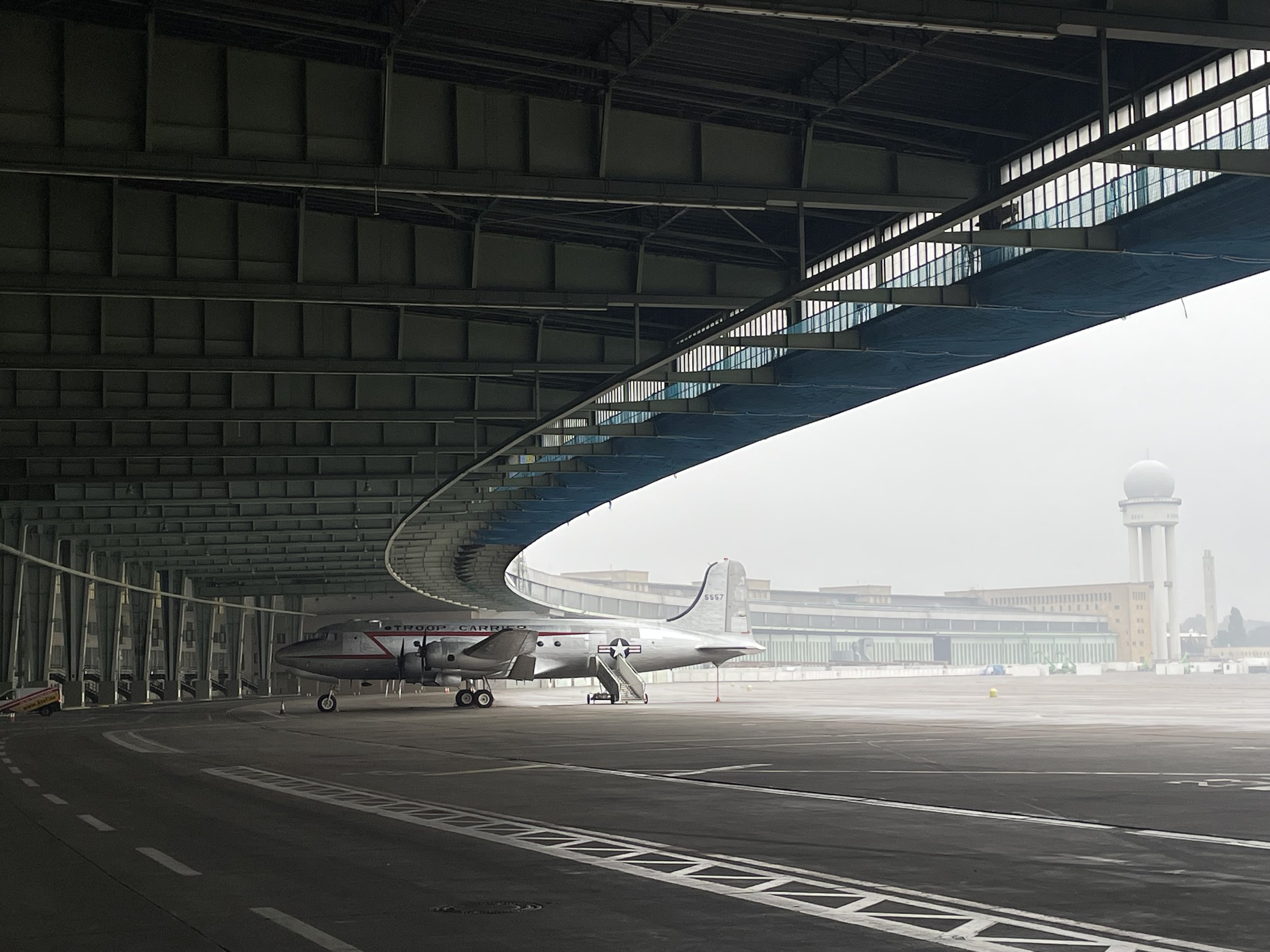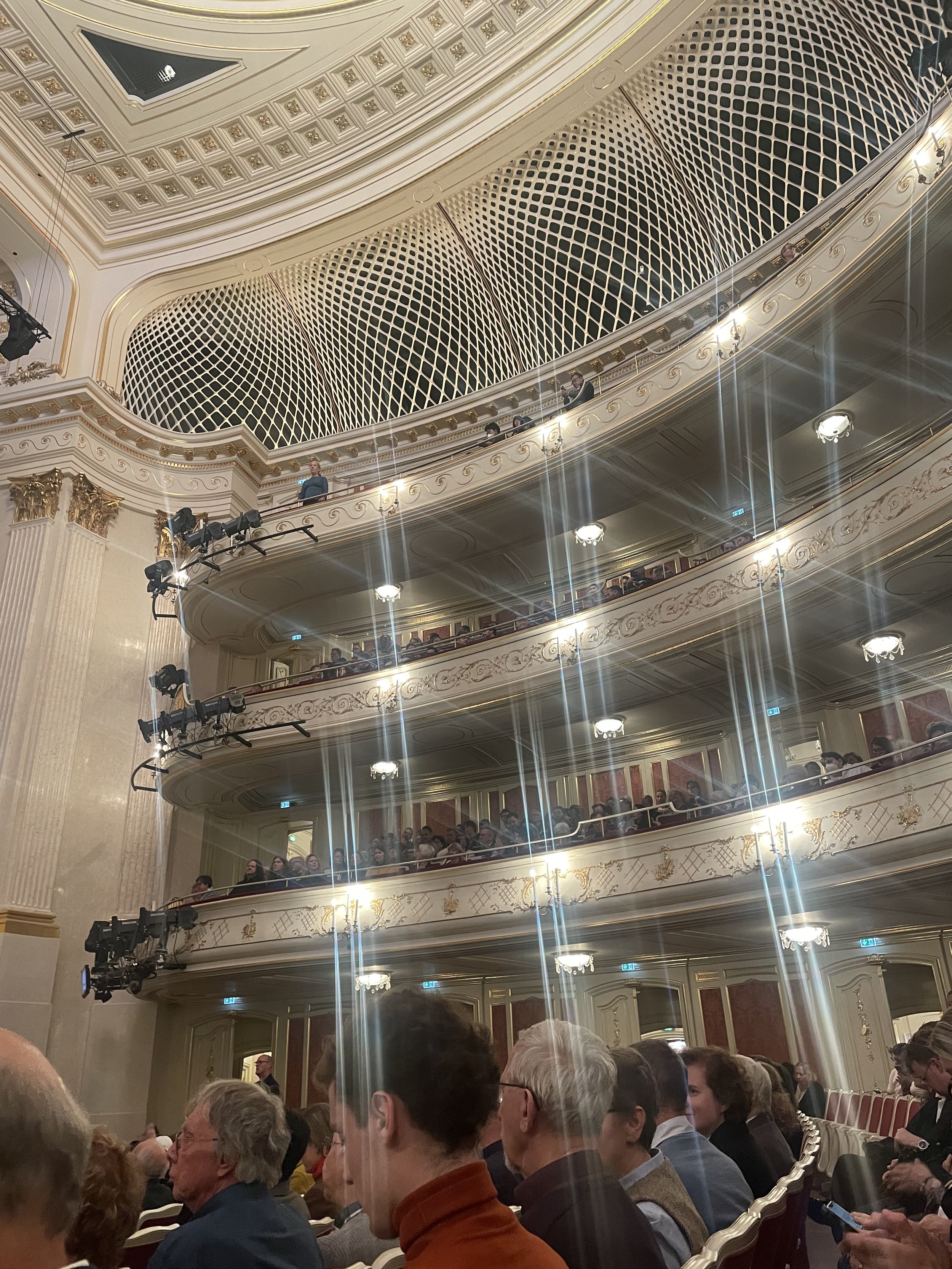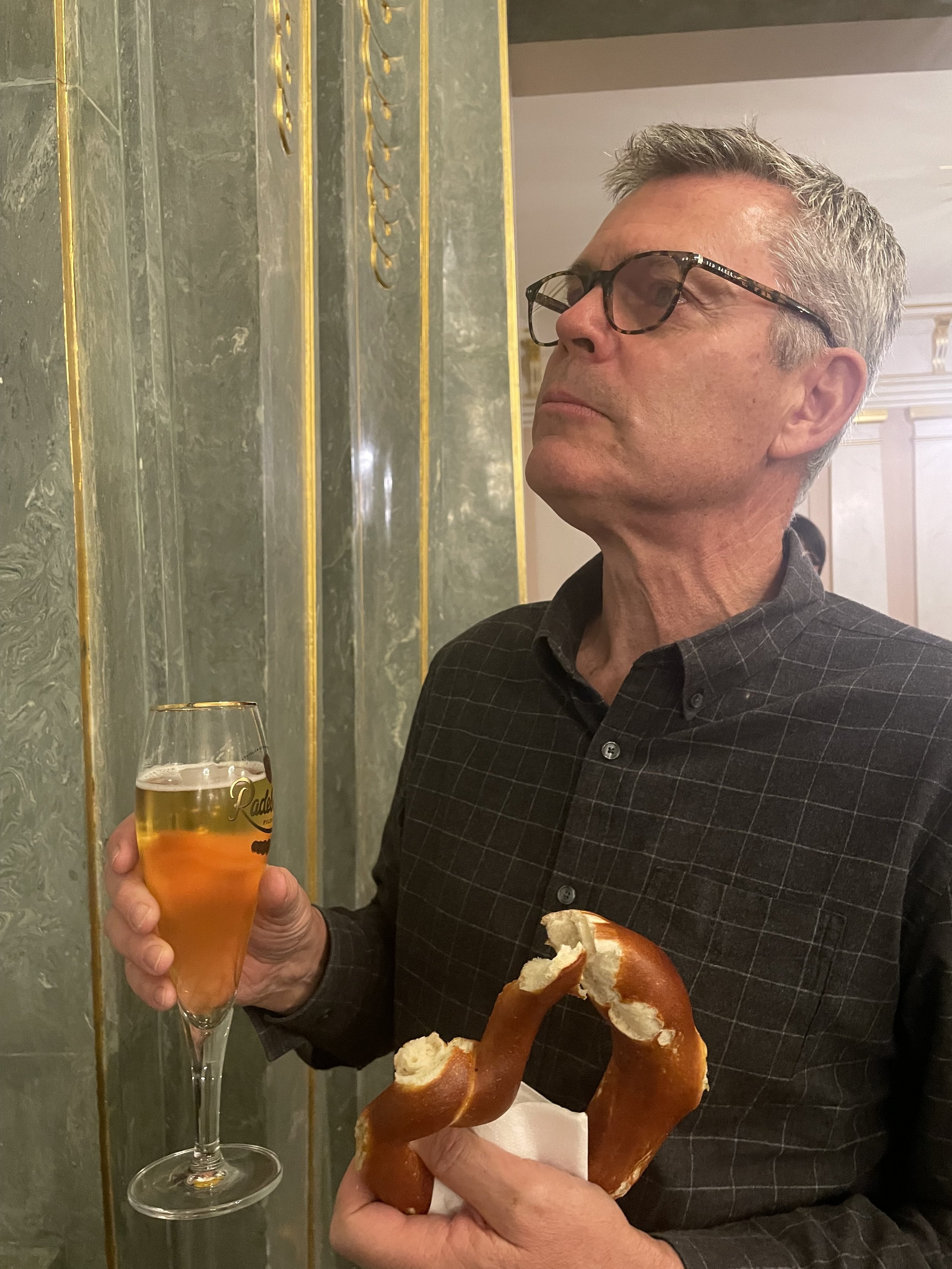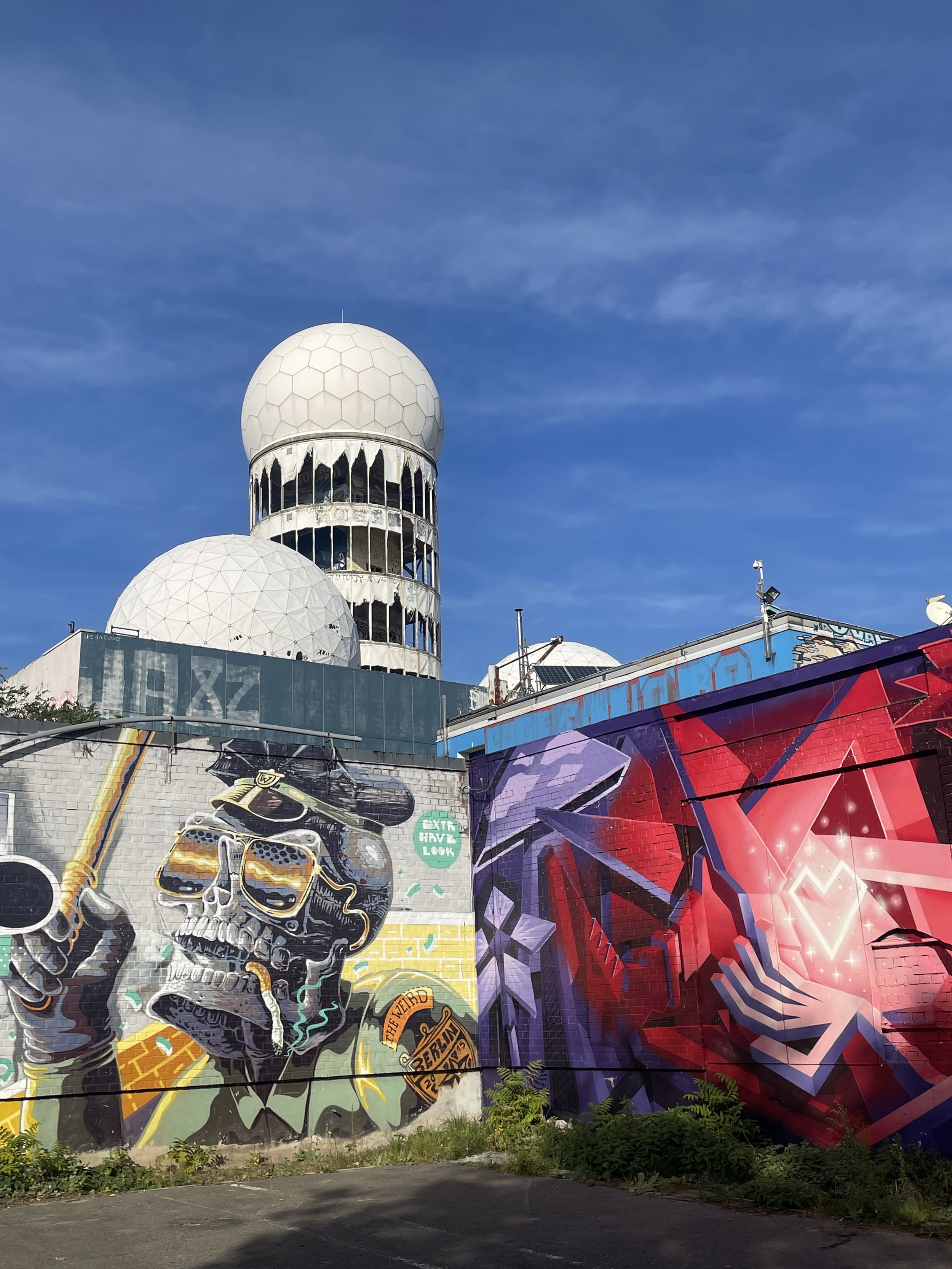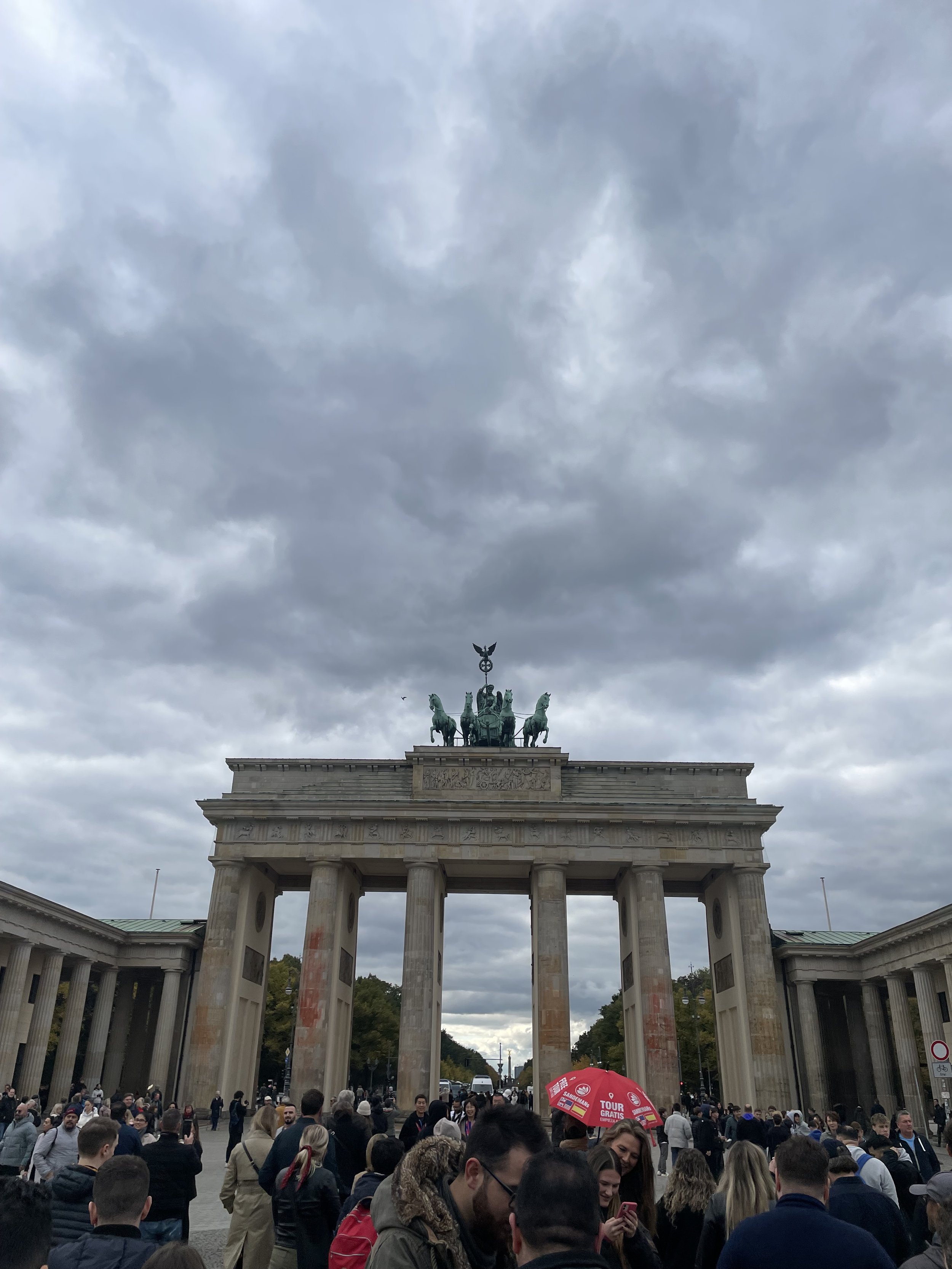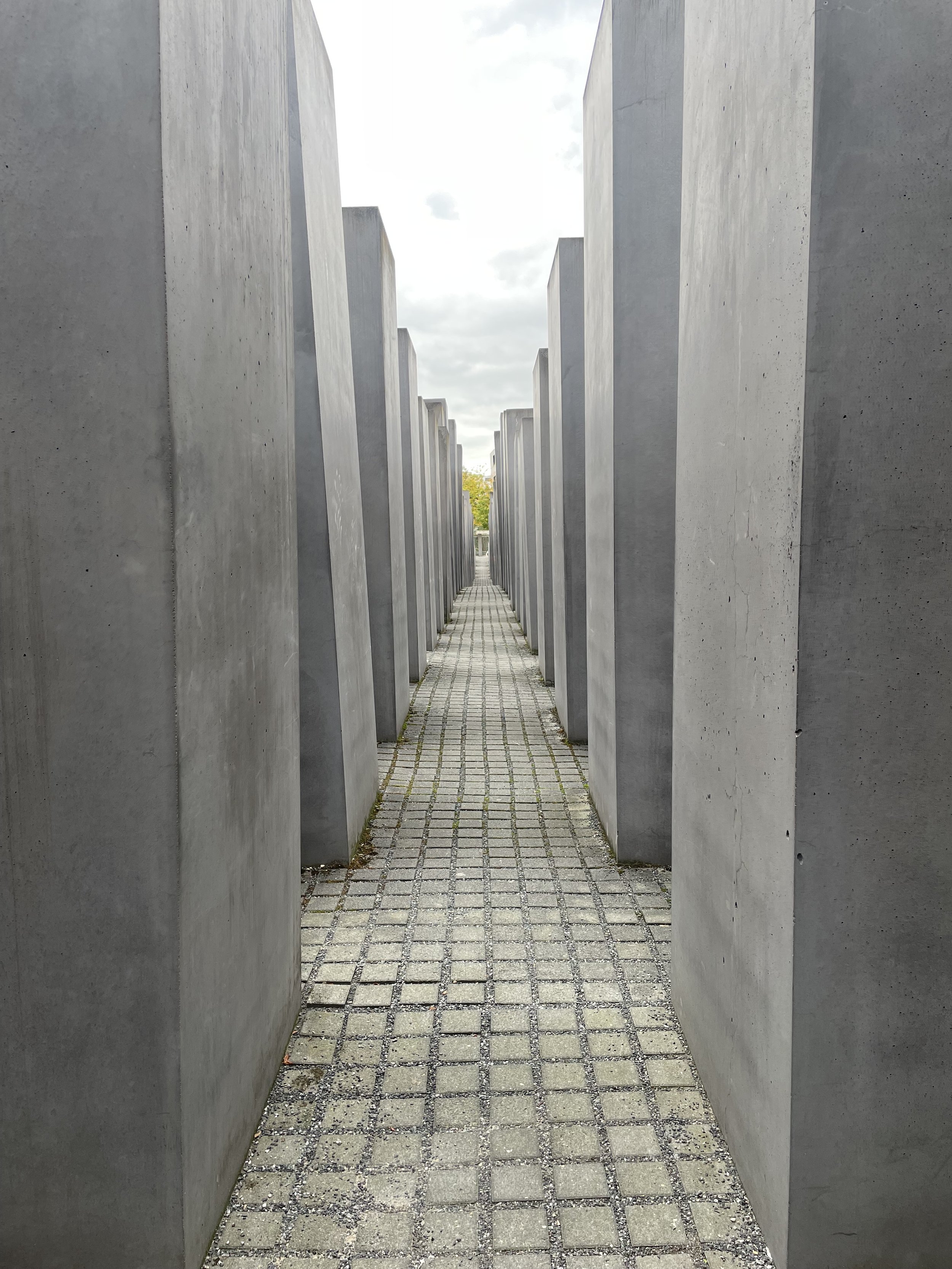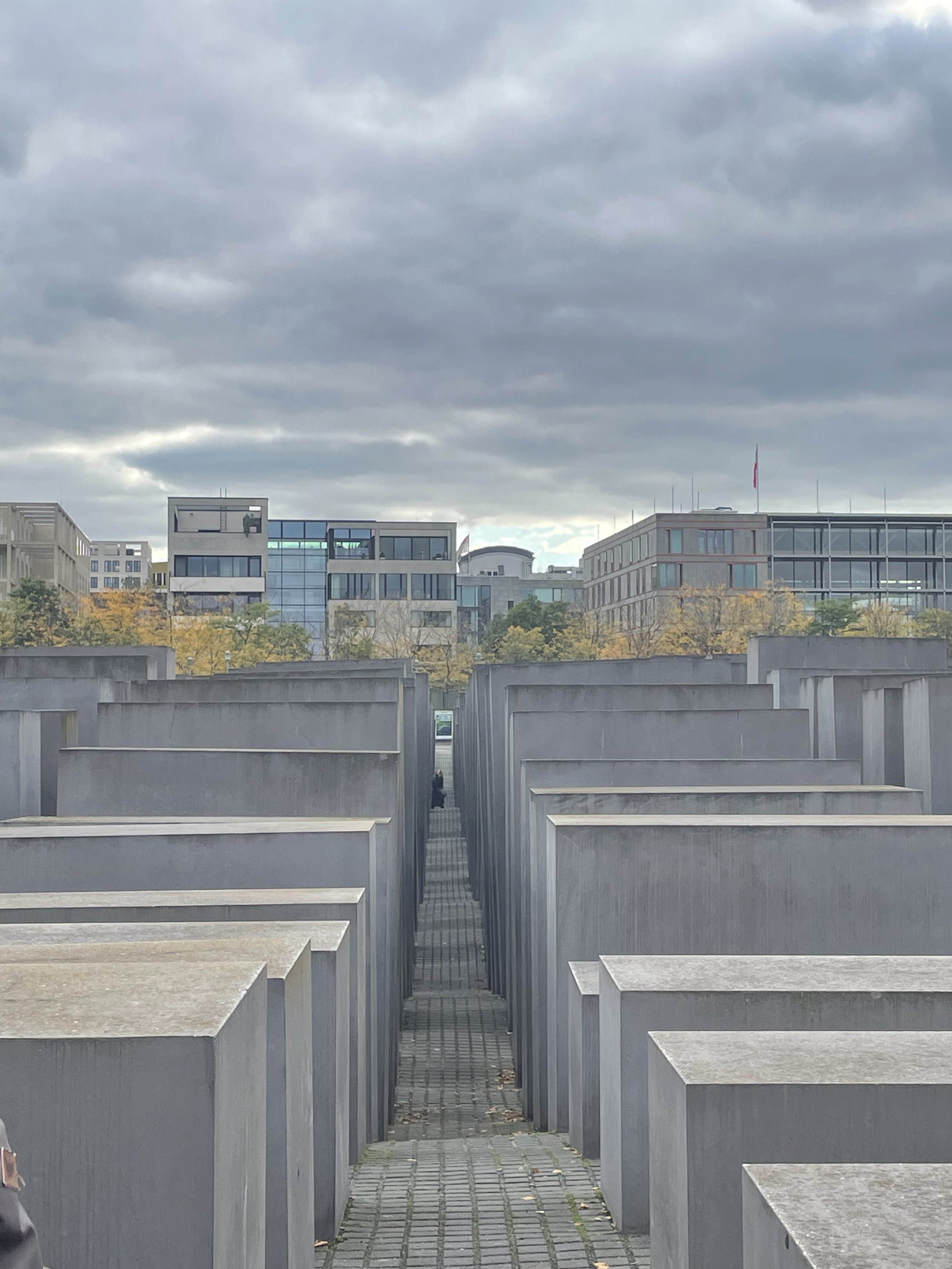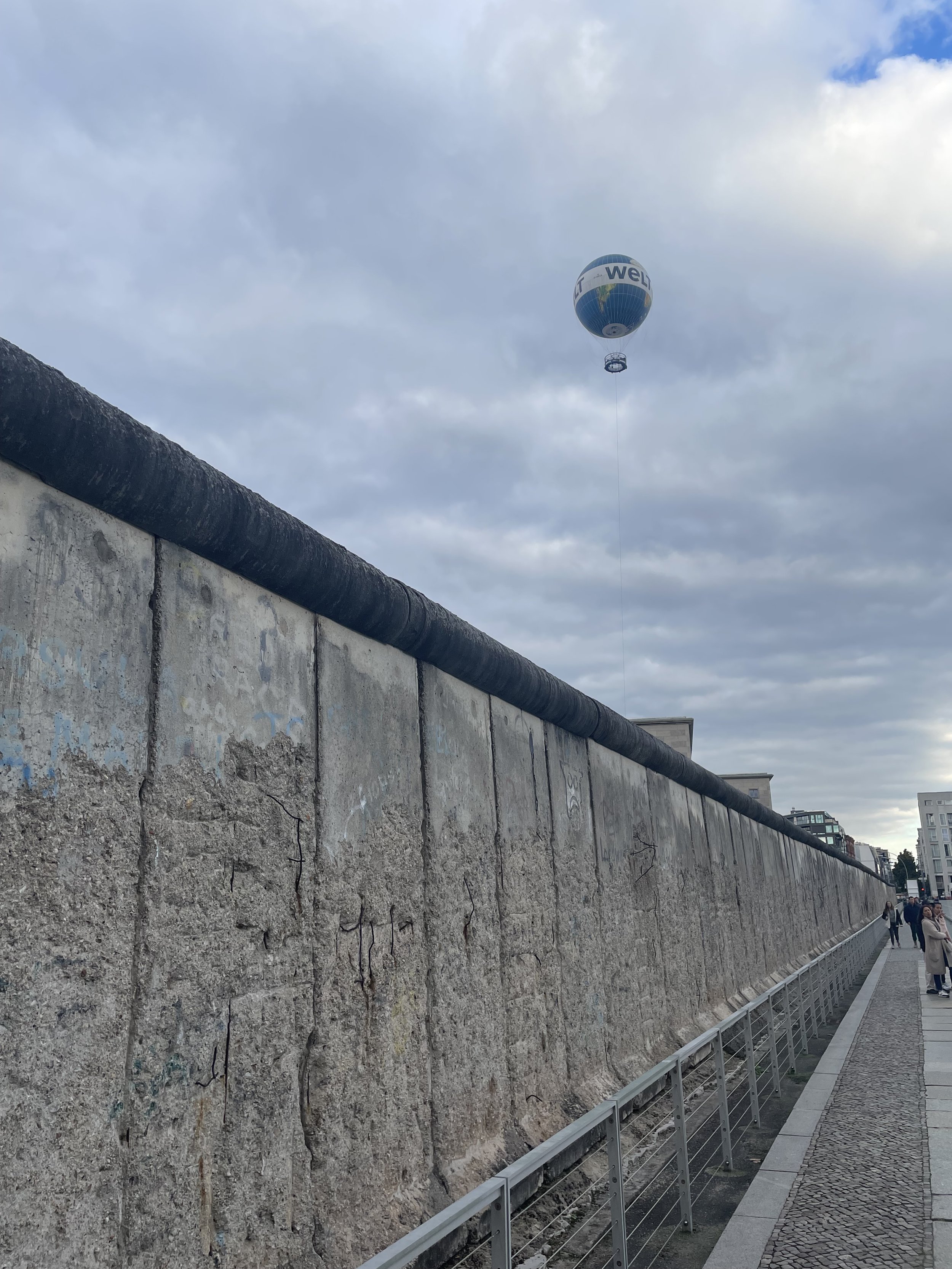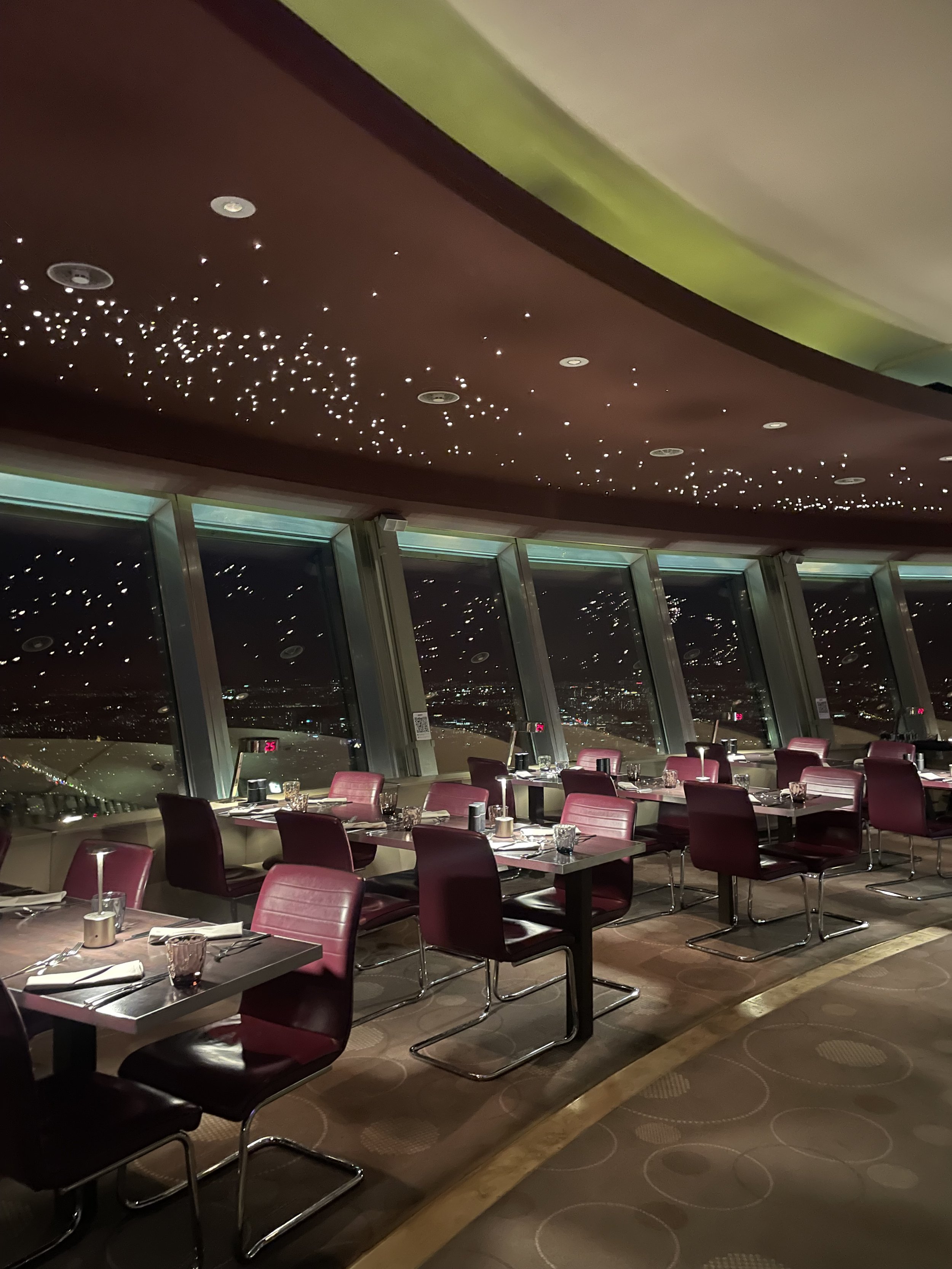Day 5 - homeward bound
We had an early start today and caught the tube and a train to the airport. Germans have a reputation for efficiency, but we have found very little to say that this is true! The airport is quite new and shiny, but the staff are thin on the ground. After a little delay we boarded and were back in East London in a blink of an eye.
It has been a wonderful trip. Berlin has so much history (not all of it good) that we could have easily spent more time there.
But now it’s back to work, saving for another trip.
Day 4 - old cars, sheltering in bars
We woke to the sound of rain. The forecast for today was not the best. Six degrees and rain all day. We had a Trabi Safari booked for 11:30 - more on that later.
We headed off in the direction of Checkpoint Charlie but carried on the walk further out of town, to a more residential area. We found a lovely little coffee shop that made delicious sounding breakfasts. It was full of young people and young families and we squeezed into two seats at a bar style area. We both had gorgeous scrambled eggs on toast and a vat of coffee and watched the shoppers of Lidl go about their business across an alleyway to the side.
The rain was really coming down now and we walked 20 minutes towards Trabi World. The Trabant Car was manufactured by the East Germans from 1949. In German, Trabant means “companion”. They are a small car, very basic - almost like an Hillman Imp. In true communist style, they were the only car made and available to East Germans.
After signing up to a waiting list, East Germans sometimes had to wait up to ten years until they received their car. Some citizens would even sign up their new-born on the waiting list, to get the car when the child was old enough to drive.
The small Trabant played a major role in the lives of East Germans, especially after the wall was put up. Many tried to escape to the West in their Trabant.
The Trabi museum is a little like a car lot. A muddy area with rows of the cute little cars. We had a quick safety briefing and a lesson in how to drive the stick shift car and we were given our car to drive around Berlin in a guided convoy of seven. The car radio picked up the instructions from the guide and he pointed out sights along the two hour route.
After a short amount of time given what we were about to undertake, we all pulled away on to the roads of Berlin. The rain was really heavy and the tiny little windscreen wipers were trying their best.
Given that this was a car from the 1970s, windscreen wipers were about as hi-tec as it gets, so we kept steaming up. That meant me lowering my window a lot, which also meant getting wet and breathing in the fumes from our car and the others. I had quite the headache at the end. Poor Andrew, always the driver! Trying to stay in a convoy, in an old car, in traffic was not easy, but the guide was excellent at keeping us all together. He pointed out lots of areas we would never have seen.
Two and a bit hours later and we rolled with relief back into the car lot (sorry, museum). We even got a little driving licence each!
Now very very cold and very wet, and the weather being particularly bad, we decided to dip into somewhere to warm up. We found a place called Maximilian. A huge bar/restaurant where the waiters all wore lederhosen! We ordered two beers, Andrew ordered meatloaf and dumplings and I had a bowl of mashed potatoes and gherkins. We stayed for another beer (all for the sake of warming up) and I had a very green beer that had woodruff in it. Tasted like body lotion a little but nice all the same!
We were now nice and warm and it was tough going back into the rain. We walked to the Reichstag (the German parliament) in the hope of getting a ticket up to the glass dome, but we were too late, so set off back to the hotel.
We walked past the holocaust memorial again and seeing only a small queue for the museum we decided to go in. It is under the memorial we saw on our first day. It has free entry, as do all of the museums or exhibitions dedicated to the education around the holocaust. I think that’s good of Germany, to ensure that the information to educate people is accessible. They are very keen to keep reminders of the country’s horrific past to reduce the likelihood of anything like that happening again.
As expected it was a sad and hard hitting exhibition. It’s just so hard to read about and see pictures of the murdered. We spent a quiet, reflective hour there and then the museum closed so we left.
A quick shower and we were off to dinner. We had passed a restaurant every day and night that is next to our hotel called Berta. It’s an Israeli restaurant and looked so inviting. We managed to book a table yesterday for tonight, and at 7pm it was already packed! We sat up at the bar and where our dedicated waiter asked us what kind of foods we enjoyed and recommended the dishes and kept topping up our sparkling water. We started with kubaneh which Is a fluffy bread and came with a range of gorgeous dips (which I now don’t know the names of). We then shared aubergine tartar which was wonderful. Gently smoked and so tasty. Then Andrew had chicken liver in wanton style parcels and I had risotto with crispy lentils. I’ve never had food so delicious! We finished with a chocolate mousse. What a treat to end the holiday.
Day 3 - abandoned airports, warming up and operatic experiences
We woke to the alarm this morning and had a slow start. We walked to Potsdamer Platz (the main shopping area near us) and went to a bakery for breakfast and coffee. Coffee is very important to us and every cup we’ve had has been delicious.
We headed to the river this morning as we had a spare hour or so before our next scheduled activity.
It’s been grey, with light rain and decidedly colder today. We had had an idea of a boat trip on the River Spree and even though the weather wasn’t on our side, time was so we decided to go for it. We boarded a sightseeing boat and within 10 minutes, us and 40 teenagers on a school trip set sail. We sat on the open top deck, the only crazy ones and listened to the recorded guide tell us the points of interest along the way. We passed Museum Island (where the main museums are situated) and some government buildings.
A pleasant, if a little cold, way to spend an hour. We then boarded the train to Templehof Flughafen. This is a disused airport. We had a tour booked for 1:30 and met our guide, a young Dutch man that studied German history. The airport is no longer in use, but was originally built in 1939 by the Nazis. It was almost finished when the war began and then work slowed down as the workers went to war. It’s a pretty impressive place. The original main hall and entrance were very foreboding but were modified after the war to be a little more welcoming. It was wonderful to be taken around the runway, the main hall and the staff areas.
After the war was over, the US forces took over part of the airport and continued to use it as a base until the 1990s.
It was a passenger airport until 2008 when the new Berlin airport was opened. It’s beautifully preserved in areas and falling down in others! In high demand from film makers, unsurprisingly, It’s owned by the State of Berlin and I can imagine very expensive to maintain.
After two hours the tour was over and we hopped back onto the train to the Liquidrom.
After the success of the Hammam baths in Spain last year we decided to find something similar in Berlin. We found this, but quickly realised that Berliners and Spaniards are very different. The Germans think nothing of being naked. I don’t mean that they walk around the streets like it, but give them a sauna and off come the clothes.
We were quite nervous but read the rules and some pools required a costume - Phew. We got changed and went into the silent pool. It was oh so warm, and it had salt in, so you could float around - as you put your head back you could hear soft music under the water. We spent an hour here and then rushed back to the hotel to get changed.
We had walked past the opera house on our first night here and happened to look at what was playing. Aida was on the schedule and they still had tickets so we booked two for tonight!
What a wonderful experience. We had looked at the story and we did need the surtitles (luckily in English as well as German) but it was a breathtaking experience. The costumes were entirely modern (the King of Egypt wore a tracksuit and fur coat) and there was a good level of humour. The voices were phenomenal.
We hadn’t had time for dinner and a bretzel in the interval was never going to be enough, so after the show we went to an Italian restaurant for a glass of wine and something to eat. Andrew had a plate of cheese with bread and olives and I had a chocolate mousse.
The rain was quite heavy on the walk back to the hotel, so it was nice to get into a warm room.
Day 2 - museums and old spies
After a comfortable sleep in a huge bed, we headed off to the metro station via a beautiful coffee stop. We are close to the metro, which is handy.
The first stop of our day was to Checkpoint Charlie. This was the main gateway between the two Berlins from 1961-1990. It was the third of such checkpoints to be opened and was therefore named after the third letter in the NATO phonetic alphabet. The area around the checkpoint was rather tacky, with lots of fast food places and souvenir (junk) shops. The checkpoint itself was good to see though.
After a few photos we entered the Mauermuseum - which tells you lots of history around the Cold War and the wall. It was information overload after a while, so much to read! The best parts were to stories of ingenious escape attempts from East to West - women smuggled in elaborate suitcase or car boot inventions. Not forgetting two families that made their own hot air balloon!
We headed to the metro again and took the S bahn (like a light railway) and the U bahn (underground) to Hauptbahhof. We walked for 15 minutes and arrived at the Hamburger Bahnhof. This was originally a railway station, then a railway museum and now a musuem for modern art.
We had come specifically to see an installation in their main hall (a bit like the Turbine Hall at Tate Modern, where the exhibits change, though the museum has a permanent collection too). It was by a Spanish artist called Eva Fabregas and titled ‘Devouring Lovers’.
The hall is huge and light filled and the sculptures looked like they were molten lava, pouring along the floor and around the rafters of the roof. They look to be made from stretchy material, a bit like tights with huge exercise balls stuffed inside. Every now and again the balls would vibrate and the structures shake. It was actually beautiful.
We spent another hour wandering around the permanent exhibition - a mixture of great art and some head scratching as to what some of them were or represented.
We then set off for the main station in Berlin. It is absolutely vast. Escalators transferring people in their droves from train to metro to street. We ate some delicious noodles in the station and then took a train to Grunewald Station. The end of the line to the south west of the city. Noting a beer Keller that might require a visit later, we headed off on foot into a beautiful pine and oak forest, which was turning a dramatic orange in the autumn and followed a trail for around 35 minutes, up up to … a disused US listening station called Teufelsberg.
In the early 20th century this area was covered in bogs and mud, but that all changed when the Nazis came to power. Part of Hitler’s vision – work began on the construction of a university faculty for military technology, but it was never completed, and destroyed during the war. After the war, trucks brought rubble from the rest of the bombed city to the site and it soon piled up to become the highest point in West Berlin. The dumping stopped in 1972, trees were planted to make the man-made hill more attractive, and a ski slope was built complete with a ski lift, a ski jump and a toboggan run. [we’re not sure if those are still there]
The Americans soon recognised the usefulness of the artificial hill. From the 1950s onwards, antennae and radar domes were erected on its two hilltops for espionage and intercepting communications. Huge dishes were built for intercepting, listening to and jamming radio signals from the Eastern Bloc. The field station was used by the American forces until the end of the Cold War in 1989.
Teufelsberg now houses a large street art exhibition with over 400 works. New works by international artists are added every month. The art is mainly wonderful, sometimes disturbing, often angry. We climbed up to the top of one set of domes and the views across Berlin were far reaching due to the beautiful clear day. The domes are covered in graffiti, very tatty, but also rather nice.
We retraced our steps through the woods to the station and stopped to reward ourselves with a nice cold beer before getting back on the train.
We took a detour on the way back to the hotel via a beautiful open street called Kurfürstendamm. It is the most “famous and elegant boulevard in Berlin”. Very much like Paris. It was now dark and we waited for a bus, but German time let us down and we gave up and went to the tube again to get back to the hotel. Weary bodies but we enjoyed a jam packed day.
Day 1 - orientation and a high place for dinner
We had a nice early-ish flight from London City Airport to Berlin. We managed to get this flight using reward points from the AMEX card, so the flights cost us £98 for two. City airport is great, as it is small, so takes no time to get your bags checked in and through security. We had a slight delay, which was annoying as we had a 2pm guided tour planned which was looking at risk!
We eventually landed in Berlin airport and decided the only way to possibly make it was to get a taxi. Forty minutes later and we dropped our bags at the hotel and sped walk to Brandenburg Gate to meet our guide. Juan was originally from Uruguay, but lives in Berlin whilst studying European history at University. There were around 25 people on our tour.
We started at Brandenburg Gate where Juan explained it as a symbol of German reunification. It was built in 1791 and was a place where people gathered for celebrations and was a symbol of peace. When the Berlin wall was erected in 1961, the gate stood in an exclusion zone (a no mans land). He explained about the area we were in and how many embassies are now on the square around the gate. No building is allowed to be higher than the gate.
Our next stop was the Memorial to the Murdered Jews of Europe. This was an open area where there are 2,711 concrete slabs (coffin shape) which are laid out on a grid pattern at different heights. It was constructed in 2004. The idea is that you walk amongst the structures and are made to feel confused and claustrophobic - how Jews would have felt during the Second World War. Over 6,000,000 Jews were killed in the Holocaust. We were given ten minutes to walk around the slabs and I can say that the area was very moving indeed.
We then walked through an estate of flats, which were very grey and functional and stopped at a child’s sandpit. We were told that this was on top of Hitler’s bunker where he killed himself. Juan actually spent very little time here, because he said that the tour should be about survivors rather than persecutors.
Our last stop of the tour was at part of the remains of the Berlin Wall. The Berlin Wall was erected in quite recent history. The Berlin Wall was a physical barrier constructed by the German Democratic Republic (East Germany) that divided East and West Berlin from 1961 to 1989. Its primary purpose was to prevent East Berliners from fleeing to West Berlin, which was governed by the Federal Republic of Germany.
Following World War II, Germany was divided into four occupation zones controlled by the Allied powers: the US, UK, France, and the Soviet Union. Berlin, located within Soviet-controlled East Germany, was also divided into four sectors.
Tensions between the Soviet Union and the three other Allied powers grew, leading to the onset of the Cold War. In 1949, West Germany was established, and its capital, Bonn, became the Federal Republic. Meanwhile, East Germany, with East Berlin as its capital, remained under Soviet control.
As tensions escalated, more than 2.5 million East Germans fled to the West via West Berlin, taking advantage of the open border that existed until 1961. This mass exodus, known as the “brain drain,” was a significant blow to the East German economy and communist regime.
On August 13, 1961, the East German government began building the Berlin Wall. Initially consisting of barbed wire fences, it soon evolved into a complex system with concrete walls, guard towers, anti-vehicle trenches, and wide “death strips” cleared of vegetation to provide a clear line of sight for border guards.
The wall stretched for 96 miles across the city.
It’s so hard to imagine what life would have been like living with a whopping great wall around you, but you can still very much see the difference between the architecture of East Germany (quite stark and functional) vs West Germany (more ornate)
Our excellent tour at and end, we whizzed back to the hotel to get showered and off to our next adventure. We caught the tube (the U-bahn) to the Alexanderplatz area - where there are lots of shops and looked up to see the Fernsehturm Berlin (TV Tower). It is SO tall! It was constructed in 1969 and is 1,207 feet tall - the tallest in Germany.
It’s main function is a TV and radio transmitter but it is also a viewing deck for tourists and has a revolving restaurant. We arrived just as the sun was setting and managed to catch a few parts of Berlin looking beautifully orange. The observation deck was packed.
After walking around the whole thing, we headed up a level to the restaurant.
It was strange. I couldn’t tell if it was me moving, the windows or the centre. Turns out it was me! We had a very nice waiter who brought us welcome drinks and menus and we ordered a lovely meal. I had the best pumpkin soup I have ever tasted! Now it was dark outside and we gazed over Berlin with it’s buildings lit up and twinkly. The meal was delicious and a real treat.
We decided to walk back to the hotel. We passed the opera house and there was a busker playing the violin so we had a small dance in a huge empty square and then made our way back to our very nice hotel for a well deserved sleep.



